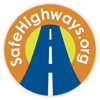Editor’s Note
When did you first learn about Safety Service Patrols and their contribution to traffic incident management? For me, and many of our readers, knowledge of Safety Service Patrols came with the job, but for the majority of the traveling public, Safety Service Patrols and their services remain a mystery; until, of course, they find themselves stranded on the side of a busy Interstate in need of a tire change, a small amount of fuel, or other form of assistance to get them on their way again. At that moment, motorists become aware (and forever grateful) of Safety Service Patrols.
State departments and authorities value the public’s opinion. They utilize comment cards and surveys to learn more about the motorist’s satisfaction and familiarity with the patrol before and after receiving assistance. Most often the surveys reveal that amid all of the praise and appreciation, motorists express a new-found recognition for Safety Service Patrols.
We learn in this issue that there is recognized benefit in making motorists more generally aware of the availability of patrol services. We also uncover that the lack of promotion and awareness of these programs can be largely attributed to: 1) Lack of available resources to promote state programs; and 2) Lack of a need to increase public awareness in order for the program to succeed and operate efficiently. For states, the value of Safety Service Patrol programs is measured less by the public’s awareness and appreciation for them and more by the demonstrated impact the patrols have in reducing response time, improving traffic flow, and decreasing fuel costs and air pollutant emissions – all benefits that, if aware, motorists appreciate, too. For those state departments and authorities who are interested in increasing public awareness about its patrol, we recommend pursuing opportunities with local press, on social media, and, if budgets allow, public service announcements.
We extend our gratitude and thanks for those Safety Service Patrol representatives who shared their thoughts on our feature topic. It is their insight that allows us to deliver a more comprehensive discourse. Thank you to North Carolina DOT Traffic Operations and Incident Management Engineer Cliff Braam, Oregon DOT Spokesman Dave Thompson, Virginia DOT Statewide Incident Management and Safety Service Patrol Program Manager Rick Via, Virginia DOT Statewide Safety Service Patrol and Strategic Initiatives Program Coordinator Robert Rabe, Ohio DOT Project Manager for the Division of Communications Paul Pegher, Hawaii DOT Engineer Benson Chow, and Nevada DOT Assistant Chief Traffic Operations Engineer Ish Garza.
Additionally, we would like to thank Federal Highway Administration Traffic Incident and Event Management Specialist Joseph Sagal, not only for his participation in this issue’s profile, but also for his dedication to improving traffic incident management training and knowledge within the industry. SafeHighways.org is pleased to be working with Joey and Kimberly Vásconez on a new initiative that creates more opportunities for idea-sharing among Safety Service Patrol programs. Together, we aim to enhance cross-program communications.
Lastly, we would like to congratulate those states that have either passed legislation or are pursuing legislation to recognize Safety Service Patrols under the “Move Over Law”. We support your efforts and remind every one to “Move Over or Slow Down” when they see a first responder on the side of the road.
We hope you enjoy this issue and, as always, we welcome your ideas and input on our publication.
Wishing you safe travels,
Elizabeth LaBelle
Editor in Chief
